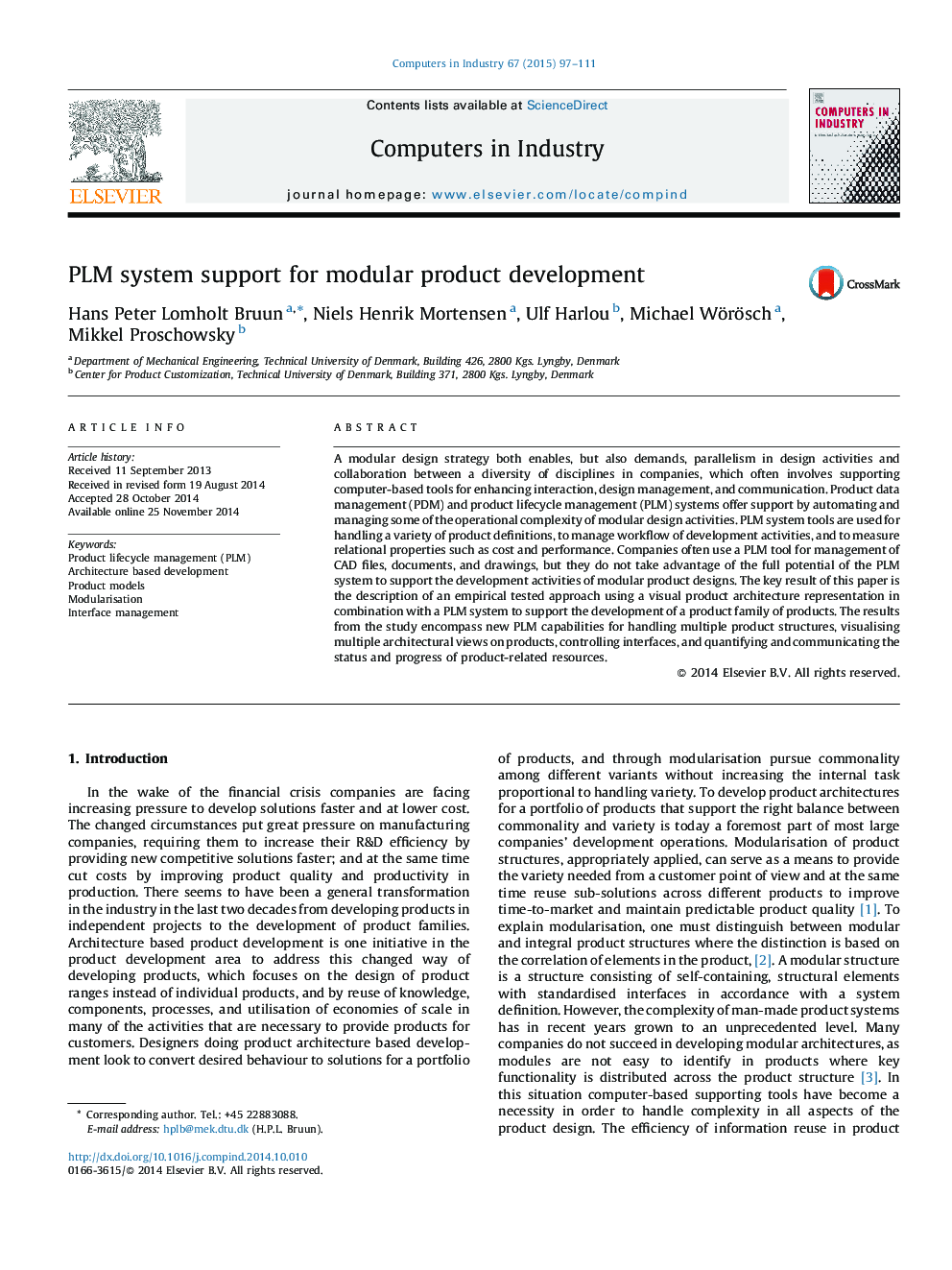| Article ID | Journal | Published Year | Pages | File Type |
|---|---|---|---|---|
| 508940 | Computers in Industry | 2015 | 15 Pages |
•Develop and evaluate modular concepts for complex products.•Clear responsibility for interfaces.•All engineering teams have access to the same single source of information.•Visualisation of multiple views on products.•Automated reporting on design progress and cost.
A modular design strategy both enables, but also demands, parallelism in design activities and collaboration between a diversity of disciplines in companies, which often involves supporting computer-based tools for enhancing interaction, design management, and communication. Product data management (PDM) and product lifecycle management (PLM) systems offer support by automating and managing some of the operational complexity of modular design activities. PLM system tools are used for handling a variety of product definitions, to manage workflow of development activities, and to measure relational properties such as cost and performance. Companies often use a PLM tool for management of CAD files, documents, and drawings, but they do not take advantage of the full potential of the PLM system to support the development activities of modular product designs. The key result of this paper is the description of an empirical tested approach using a visual product architecture representation in combination with a PLM system to support the development of a product family of products. The results from the study encompass new PLM capabilities for handling multiple product structures, visualising multiple architectural views on products, controlling interfaces, and quantifying and communicating the status and progress of product-related resources.
